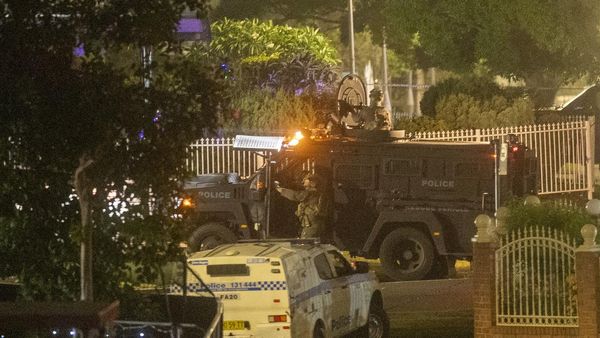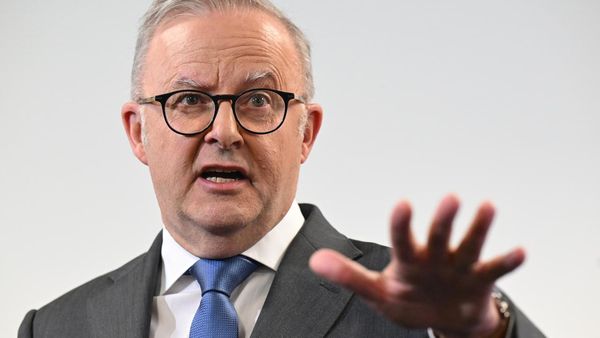
Property price falls in Sydney and Melbourne are gaining momentum as borrowing costs rise, setting a trend likely to be followed in other state capitals, according to industry analysts CoreLogic.
Data taking in most of June indicates home values in Sydney are down 3% from their peak in February and are about 1.8% lower in Melbourne after a peak in March, said Tim Lawless, CoreLogic’s founder and research director.
In June alone, prices in Sydney were down about 1.4% from May. “We’re seeing the rate of decline in housing values gathering very clear momentum,” Lawless said. The trajectory is already much sharper than in the previous decline in 2017.
“There’s still probably another potentially 12 months ahead of us in this downturn,” he said. Lawless predicted the market was in the “fairly early stages” of a decline, with the extent of falls contingent in part on how rapidly the Reserve Bank lifts its interest rate to quell inflation.
A range of indicators point to a cooling of the property market. Last week, almost 29% of properties scheduled for auction in Sydney were withdrawn from the market because of weak demand, the largest proportion since April 2020 when the first Covid wave was arriving, CoreLogic said.
Data from @corelogicau shows auction clearance rates over the weekend were generally lower than a year ago for the major markets. In Sydney, about 29% of the properties on the scheduled auctions were pulled, the most since April 2020 (when Covid came to town...) pic.twitter.com/G9rldhHMFn
— Peter Hannam (@p_hannam) June 27, 2022
And homes are taking longer to sell.
During the 2017-19 slump, the average house went from 24 days on the market to as many as 69 at the cycle’s nadir.
By contrast, during their shortest time to sell last October, the average house was last only 20 days on the market. That has now risen to 29 days.
“It’s a fairly gradual trend upwards, but it’s also a very clear trend,” Lawless said.
“As homes take longer to sell, you see discounting rates start to become larger as vendors need to negotiate more. That will also be reflected in lower auction clearance rates as well.”
Listings in Sydney were also about 8% higher than they were a year ago.
Melbourne was on a similar track, although from a lower base than Sydney because the run-up in property prices was less severe, Lawless said. Melbourne has had falling auction clearance rates and properties were taking longer to sell as well.
The Victorian capital held almost 1000 auctions in the past week. Preliminary data indicates just over 60% secured a sale, the best proportion in a month but well shy of the almost 75% clearance rate of this time last year, CoreLogic said.
Trends were less clear in other capitals, in part because auctions were typically a less popular way to trade property. In Adelaide and Brisbane, only about 10-15% of sales were by auction, Lawless said.
Adelaide remains the strongest property market among the capitals, with housing values still rising at about 1% a month. Auction clearance rates were also higher, with more than two out of every three homes selling.
Brisbane’s market has been more volatile, with clearance rates down to the high 40% range, but bouncing back to about 65% in the past week. Homes are taking 20 days on average in private treaty sales, up from 16 days a year ago.
“Brisbane has a market that’s still pretty hot but not red hot like it used to be, and Adelaide, I put it in the same basket,” Lawless said.
About a week out from the next RBA board meeting, investors are still tipping almost a two-in-three chance that the central bank will lift its cash rate to 1.5%, with a lot more increases to come: pic.twitter.com/BnJTD49YxG
— Peter Hannam (@p_hannam) June 27, 2022
Perth, meanwhile, may buck the trend. The city, which had Australia’s most expensive median housing in 2006, now lags all other capitals after prices began falling in mid-2014 up until about six months ago.
“It’s very affordable market,” Lawless said. With a jobless rate below 3% and a still buoyant commodities-driven economy, “Perth looks to be maybe a little bit more insulated from the downturn”.
The prospect of diminishing property prices across much of Australia probably won’t bring much relief to those in the rental market, Lawless said.
Rents are rising at an annual rate of 9% nationally, with vacancy rates typically around just 1% or near record lows.
With international markets beginning to reopen, bringing more students and migrants, Lawless expected to see additional rental demand flowing into Australia. “Potentially, we see renters really struggling with rental affordability,” he said.
The likely result is that property investors will be wooed back into the market over the next six to nine months as gross rental yields return to more typical levels, Lawless predicted. Their return may help taper the fall in property prices.







